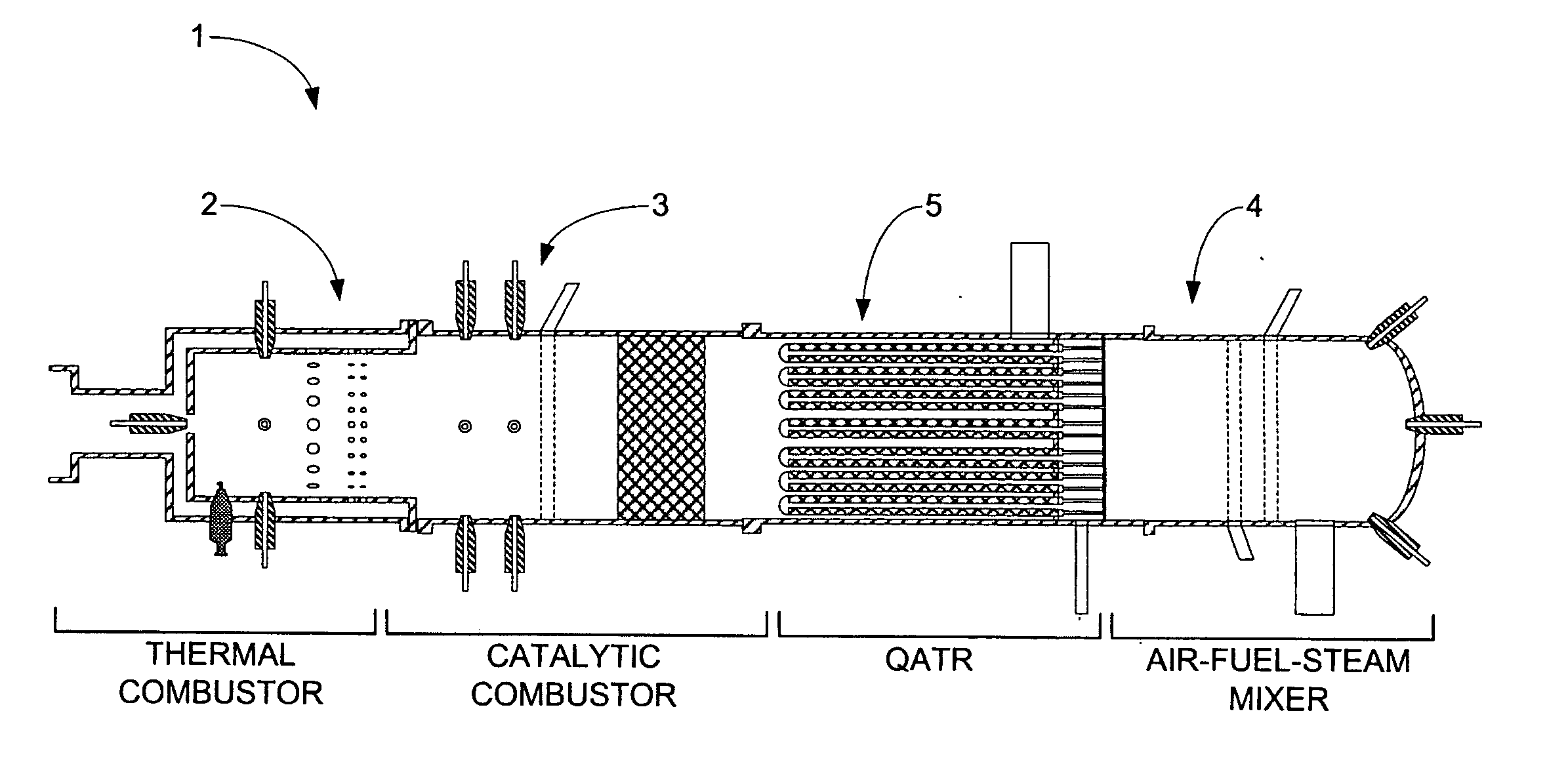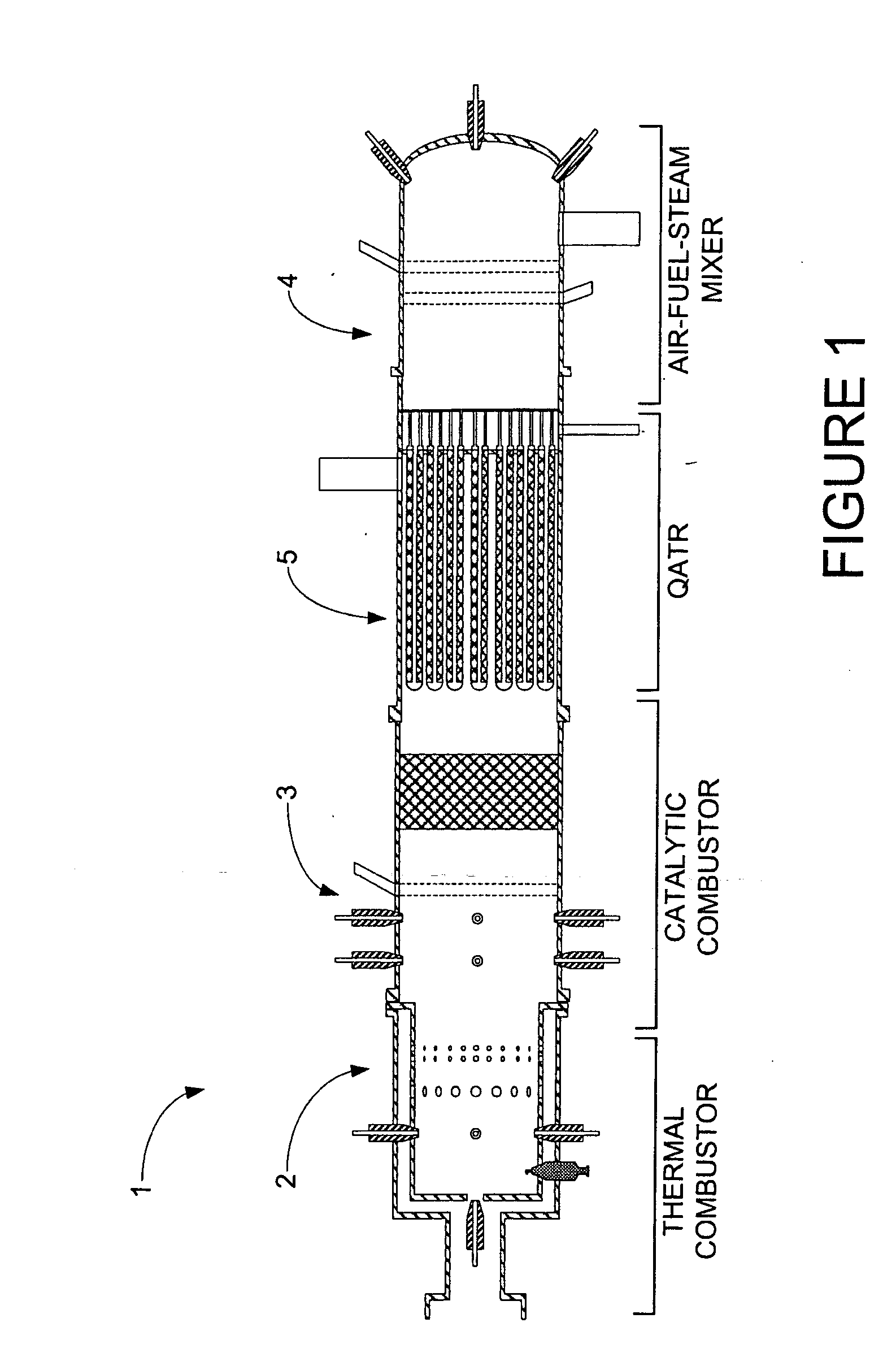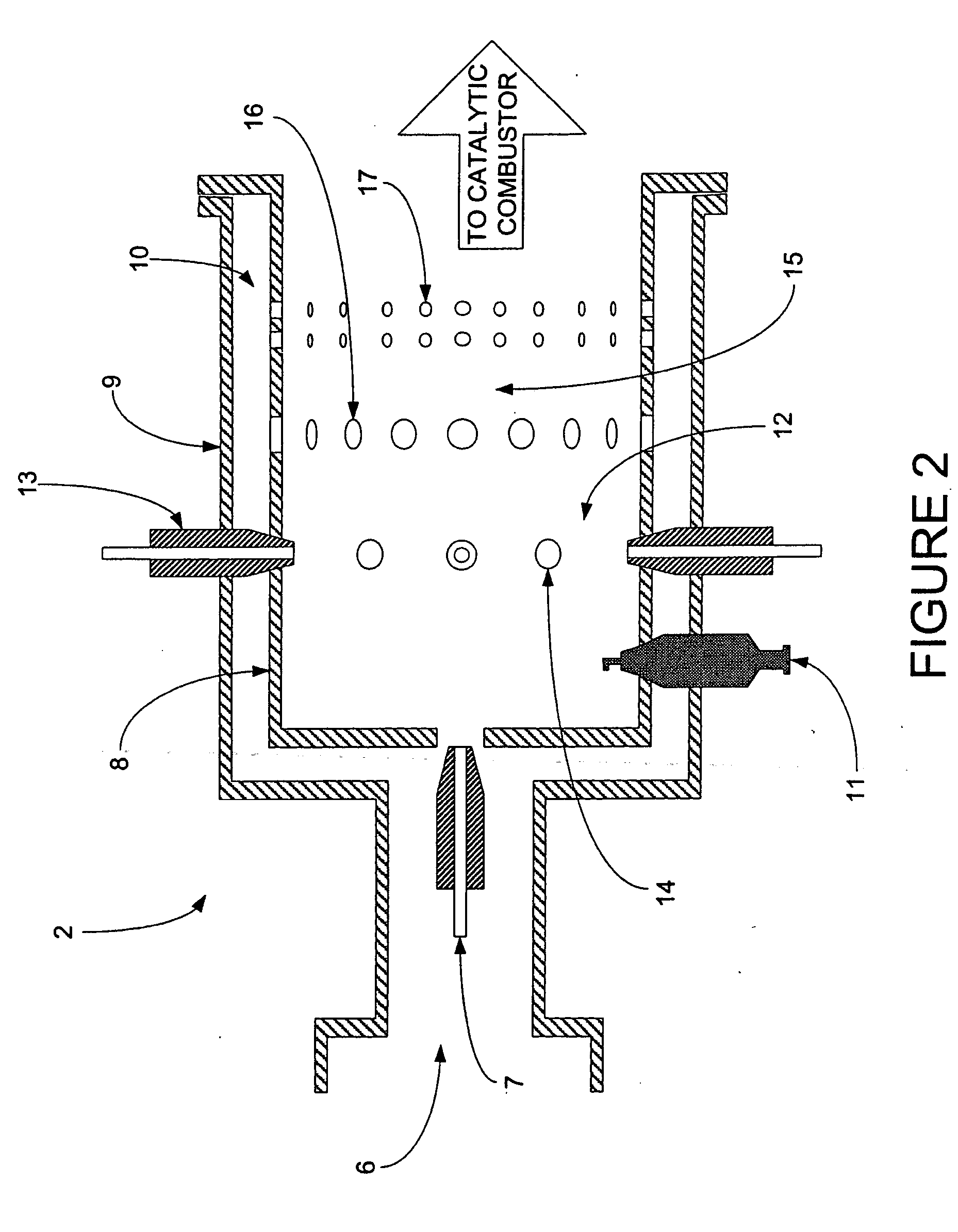Integrated fuel processor subsystem with quasi-autothermal reforming
a fuel processor and subsystem technology, applied in the field of fuel processors, can solve the problems of preventing the recovery of much of the waste heat, affecting the efficiency of the fuel processor, so as to achieve the effect of providing sufficient flexibility
- Summary
- Abstract
- Description
- Claims
- Application Information
AI Technical Summary
Benefits of technology
Problems solved by technology
Method used
Image
Examples
Embodiment Construction
[0024] Cold start and transient response expected present a design challenge for the onboard conversion of hydrocarbon fuels (reforming) to produce the hydrogen required for fuel cell operation especially in transportation applications. Ideally the fuel processor will be compact, highly efficient and have a rapid-start and good transient capability. In this regard, decreasing the size of the fuel processor will directly reduce the size and weight of the total fuel cell system and will also tend to improve the transient and start-up performance. Particularly in vehicular applications, an onboard fuel processor must have “cold start” and transient capabilities to meet the operating demands of the application while also allowing for efficient steady-state performance.
[0025] A fuel processor 1 according to the present invention, an embodiment of which is illustrated in FIG. 1, combines a multipurpose thermal combustor 2 with a catalytic combustor 3 in order to provide the required H2 t...
PUM
 Login to View More
Login to View More Abstract
Description
Claims
Application Information
 Login to View More
Login to View More - R&D
- Intellectual Property
- Life Sciences
- Materials
- Tech Scout
- Unparalleled Data Quality
- Higher Quality Content
- 60% Fewer Hallucinations
Browse by: Latest US Patents, China's latest patents, Technical Efficacy Thesaurus, Application Domain, Technology Topic, Popular Technical Reports.
© 2025 PatSnap. All rights reserved.Legal|Privacy policy|Modern Slavery Act Transparency Statement|Sitemap|About US| Contact US: help@patsnap.com



